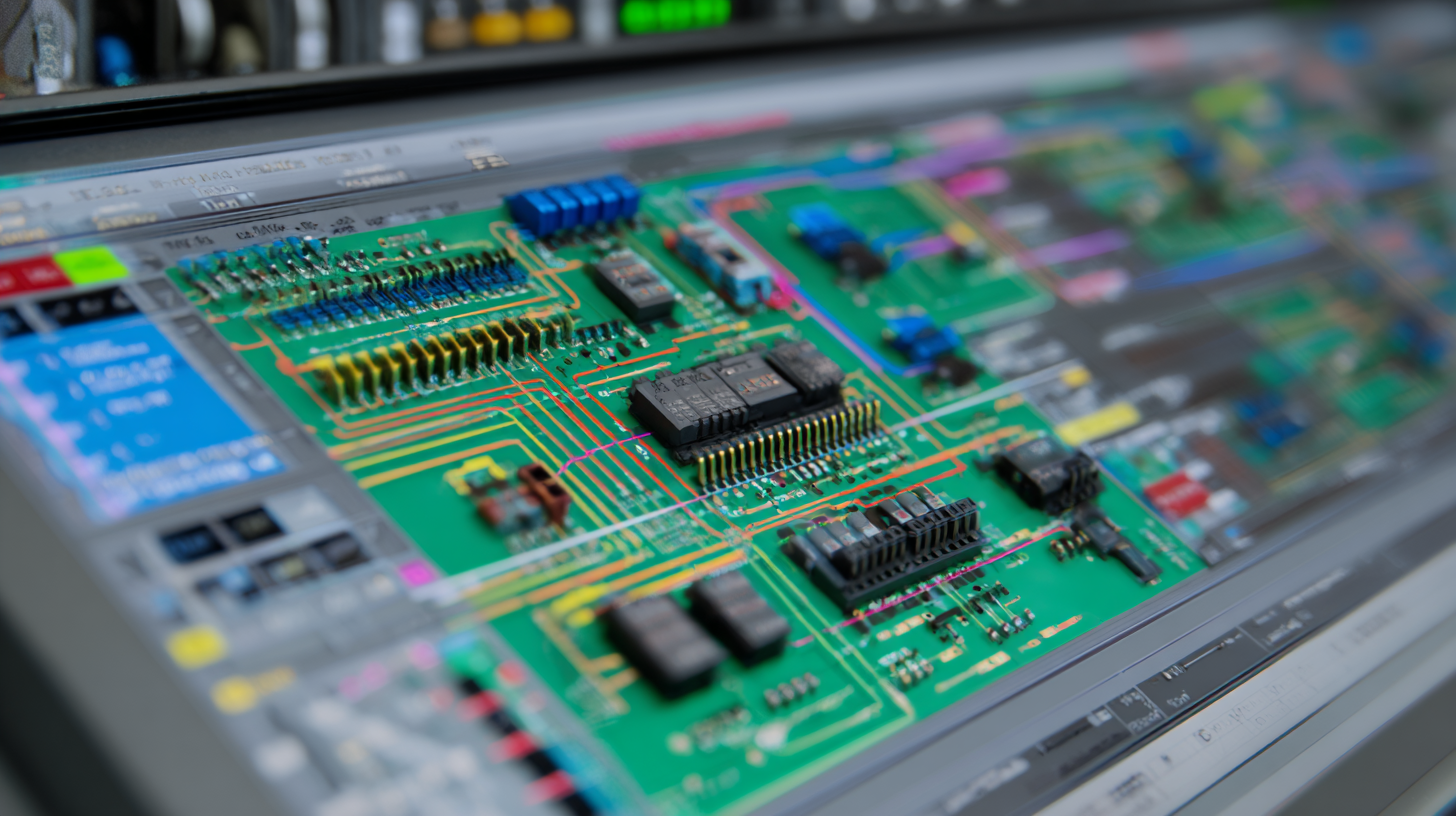30+ Years of Experience in PCB Design and Manufacturing
In the rapidly evolving field of electronics development, mastering circuit design software has become essential for engineers and designers aiming to innovate and optimize their projects. According to a report by MarketsandMarkets, the global electronic design automation (EDA) market, which includes circuit design software, is projected to reach $15.61 billion by 2025, growing at a CAGR of 8.3% from 2020. This growth is driven by the increasing complexity of electronic components and the demand for miniaturization and energy efficiency.
 As entrepreneurs and large corporations alike invest heavily in advanced technologies, the ability to effectively utilize circuit design software not only enhances productivity but also fosters creative solutions to meet market needs.
Therefore, mastering these tools is crucial for anyone involved in the design and development of innovative electronic systems.
As entrepreneurs and large corporations alike invest heavily in advanced technologies, the ability to effectively utilize circuit design software not only enhances productivity but also fosters creative solutions to meet market needs.
Therefore, mastering these tools is crucial for anyone involved in the design and development of innovative electronic systems.
For beginners venturing into the field of electronics, understanding circuit design software is crucial. These tools serve as the backbone for creating and simulating electronic circuits, allowing designers to visualize their ideas before physical implementation. Familiarizing oneself with basic components such as resistors, capacitors, and integrated circuits is essential in maximizing the potential of these software applications. Each program may have its unique interface and functionalities, but most share common features, including schematic capture, simulation, and PCB layout capabilities.
Learning to navigate these software tools can be daunting at first, but many platforms offer tutorials and community support that can ease the onboarding process. Beginners should focus on grasping foundational concepts, such as Ohm's law and Kirchhoff's laws, as they will frequently encounter these principles while designing circuits. Engaging in practical projects, even simple ones, can enhance understanding and build confidence. With time and practice, mastering circuit design software will not only improve one's technical skills but also pave the way for innovative developments in electronics.
In the ever-evolving landscape of electronics, mastering circuit design software is essential for engineers looking to drive innovation. Advanced features in these software tools, such as predictive analysis, real-time simulation, and integration with AI technologies, allow designers to create more efficient and sophisticated electronic applications.
According to a recent report by MarketsandMarkets, the global electronic design automation (EDA) market is expected to reach $15 billion by 2025, underscoring the importance of leveraging these tools for competitive advantage.

One effective tip for maximizing the potential of circuit design software is to utilize its simulation capabilities early in the design process. By running virtual tests on designs, engineers can identify potential issues and optimize performance before physical prototyping, significantly reducing time and costs associated with development. Additionally, integrating user feedback into the design iterations can lead to more innovative solutions that meet market demands.
Furthermore, a focus on collaborative features can enhance productivity. Tools that allow multiple users to work on a single project simultaneously can streamline the development process. As noted in a report by ResearchAndMarkets, companies that embrace collaborative design practices can see up to a 25% increase in project completion speed, making it crucial for teams to adopt these advanced features for successful electronic application development.
In the realm of electronics development, the integration of circuit simulation tools plays a pivotal role in enhancing design accuracy. The advancement of CAD software has transformed the design and engineering landscape, allowing engineers to create precise 3D models and detailed representations of circuits. This modernization is crucial as the global photonics integrated circuit market is projected to soar, reaching an impressive USD 97.62 billion by 2034, indicating a significant push for accurate and efficient circuit design methodologies.
Recent innovations such as AI-driven tools further exemplify the importance of simulation in circuit design. These tools not only streamline the design process but also adapt to the unique requirements of RF and antenna design, improving overall performance. The emergence of comprehensive models for specific applications, like Mach-Zehnder interferometers for photonic computing, highlights the necessity of precise circuit behavior predictions during the design phase. As competition in sectors like quantum computing intensifies, employing advanced simulation software becomes indispensable for engineers aiming to maintain a cutting-edge position in innovative electronics development.
In today's rapidly evolving electronics landscape, collaborative circuit design has become a crucial aspect for teams aiming to innovate. According to a study by the Institute of Electrical and Electronics Engineers (IEEE), approximately 70% of successful electronics projects benefit from effective collaboration among team members. Best practices for nurturing this collaborative spirit include implementing robust communication tools, fostering an inclusive team culture, and utilizing version control systems. These tools not only streamline workflows but also minimize the risk of errors that often arise from miscommunication.

Moreover, adopting agile methodologies can significantly enhance collaboration in circuit design projects. A report by McKinsey demonstrates that teams using agile practices can improve project delivery speed by up to 25%. By breaking down complex tasks into smaller, manageable segments, team members gain the flexibility to adapt to changes and provide feedback more rapidly. This iterative approach encourages active participation from all team members, leading to a richer exchange of ideas and more innovative outcomes in circuit design. Emphasizing these best practices is essential for any team looking to push the boundaries of electronics development.
In the landscape of electronics development, the evolution of circuit design software is significantly influenced by emerging trends in the semiconductor industry. As highlighted in recent reports, the integration of artificial intelligence into electronic design automation (EDA) tools is redefining how engineers approach circuit design. These advancements aim to enhance not only the efficiency and accuracy of designs but also the overall innovation in circuitry. For instance, AI-driven tools can automate repetitive tasks and enable designers to focus on complex problem-solving, thereby accelerating the development cycle.
Furthermore, the "十四五" plan in China emphasizes the strategic importance of the integrated circuit industry amid global competition. As the industry adapts to "再全球化" and the rapid advancements in technology, circuit design software must evolve to accommodate new requirements for scalability and performance. This transformation is vital for industries reliant on semiconductor innovation, suggesting that the future of electronics development will hinge on mastering these sophisticated software tools that blend cutting-edge technologies with traditional design methodologies. Such an evolution not only facilitates the creation of innovative products but also strengthens a country’s competitive edge in the global market.
| Dimension | Description | Future Trend | Impact on Development |
|---|---|---|---|
| User Interface | Enhanced graphical user interfaces for improved usability. | Increased focus on user experience. | Faster learning curves and reduced design errors. |
| AI Integration | Utilization of AI for predictive analysis and design suggestions. | More reliance on artificial intelligence. | Increased efficiency and innovation in design processes. |
| Cloud-Based Solutions | Design tools accessible from anywhere with internet connectivity. | Growth of collaborative platforms. | Enhanced remote collaboration and sharing of designs. |
| Simulation Capabilities | Advanced simulation tools for real-time feedback on designs. | Integration of real-time simulation features. | Quicker prototyping and reduced time to market. |
| Customization | User-specific customization of tools and workflows. | Increased demand for personalized software features. | Better alignment of tools with user needs and preferences. |





